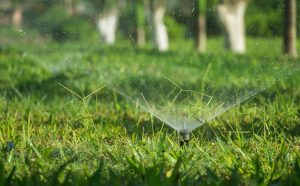Spring Landscaping Checklist for Montana Yards
Montana’s long winters can be tough on yards, leaving behind everything from broken branches to compacted soil and patchy grass. As the snow melts and the temperatures rise, spring is the ideal time to assess the condition of your outdoor space and get it ready for the growing season. At Horizon Landscape & Irrigation, we’ve put together a step-by-step spring landscaping checklist to help homeowners across Big Sky Country start the season strong.
1. Inspect for Winter Damage
Winter can take a serious toll on your landscape. Start your spring cleanup by walking the property and noting areas of damage.
Check for Broken Branches: Prune dead or damaged limbs before new growth appears.
Look for Drainage Issues: Pooled water or soggy spots could mean clogged downspouts or low-grade areas that need correcting.
Inspect Hardscapes: Ice and snow can shift pavers, crack pathways, and stress retaining walls—schedule repairs early.
2. Clean Up Debris
Snowmelt often reveals a mix of leaves, twigs, and other debris that needs clearing.
Rake Gently: Especially over lawns that may still be soft from the thaw.
Clear Beds and Borders: Removing leaves and old mulch helps prevent mold and allows fresh air and light to reach the soil.
Clean Out Gutters: Early spring is a great time to clear leftover fall debris from gutters before spring rains hit.
3. Test and Prep Your Irrigation System
Before plants start growing in earnest, it’s essential to ensure your sprinkler system is ready.
Inspect Sprinkler Heads: Look for cracks, clogs, or tilted heads.
Test Zones: Run each irrigation zone and watch for leaks, sputters, or poor coverage.
Schedule Repairs: Horizon Landscape offers spring irrigation checkups and tune-ups to get your system in shape for the season.
4. Prune with Purpose
Spring pruning encourages healthy growth and sets the stage for the year.
Cut Back Ornamental Grasses: Trim to a few inches above ground before new growth emerges.
Shape Shrubs and Perennials: Remove deadwood and spent growth while leaving space for new buds.
Wait on Some Plants: Avoid pruning spring-flowering shrubs like lilacs until after they bloom.
5. Refresh Mulch and Edging
A new layer of mulch not only looks great, but it also conserves moisture and suppresses weeds.
Use Natural Mulch: Bark, shredded wood, or composted mulch works best for Montana’s climate.
Don’t Pile Mulch Too High: Keep it away from plant stems and tree trunks to prevent rot.
Redefine Edges: Use a spade or edging tool to give beds a crisp, clean outline.
6. Fertilize Thoughtfully
Montana’s soils can be low in nutrients after winter. Early spring is a good time for fertilizing.
Choose the Right Product: Use a slow-release fertilizer appropriate for your grass or plants.
Don’t Overdo It: Follow instructions carefully to avoid burning new growth.
Consider Soil Testing: For a customized fertilization plan, Horizon can help test your soil’s pH and nutrient levels.
7. Plan for New Plantings
If you want to add trees, shrubs, or perennials, early spring is the best time to plan.
Choose Zone-Hardy Plants: Focus on natives and species suited to Montana’s USDA zones (usually 3 to 5).
Group by Sun and Water Needs: Designing smarter now saves work later.
Think Ahead: Plan now for summer color, fall interest, or even wildlife-friendly features like pollinator beds.
Start the Season Right with Horizon
A well-timed spring landscape refresh can improve your curb appeal, protect your plants, and reduce problems later in the season. Horizon Landscape & Irrigation is here to help you make the most of every season with irrigation, design, and maintenance services tailored to Montana’s climate.
Contact us at https://horizonlandscapemt.com to schedule your spring landscape service or irrigation system checkup. Your yard—and your summer—will thank you.
Read Next: Sprinkler System Tips for Surviving Montana’s Freeze-Thaw Cycles




